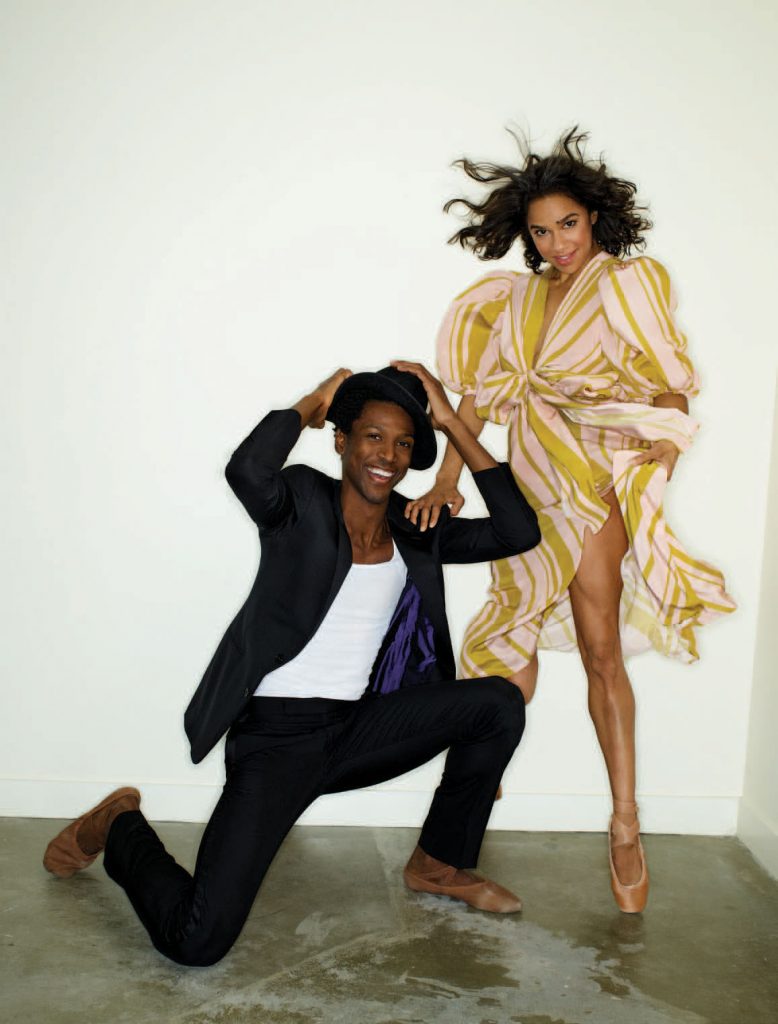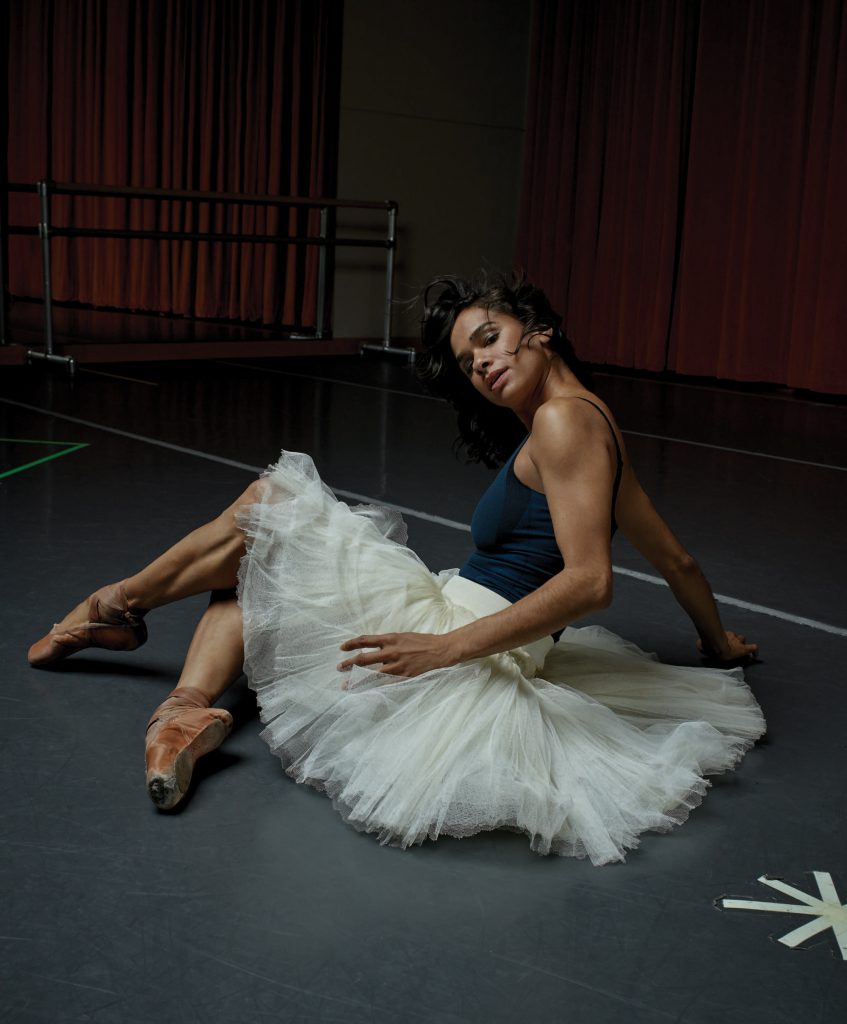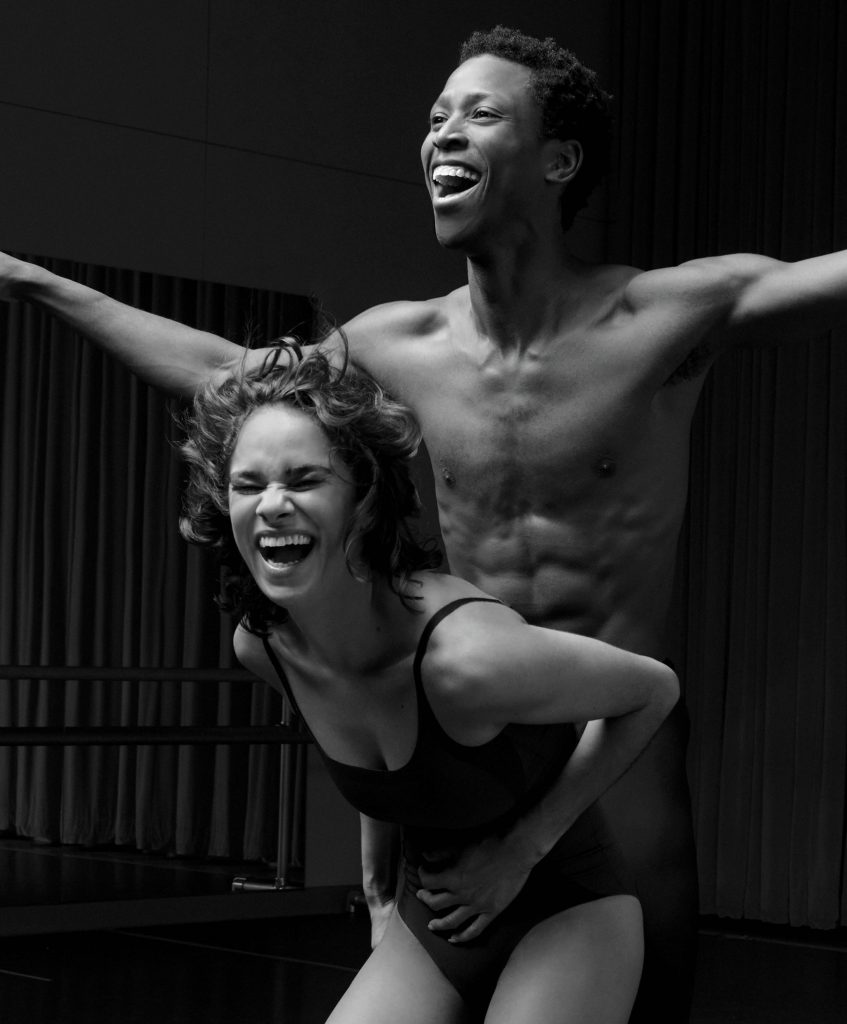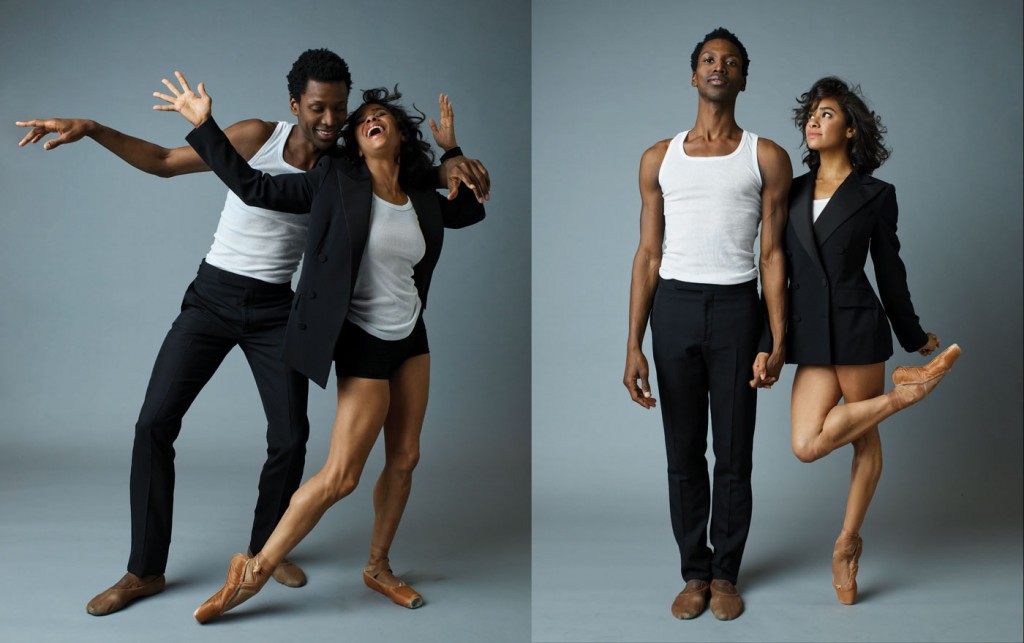“Romeo is a career-defining role, and it’s such a gift to do it alongside Misty,” says ABT soloist and ascendant star Calvin Royal III. “It is momentous, not just for us, but for the future of this art form, and for the future generations of kids who see themselves in us.”
For some time now the three-act story ballet Romeo and Juliet, created in the 1930s with a score by Sergei Prokofiev, has served as a kind of cultural bellweather. The Soviet iteration of Shakespeare’s tragedy, for example—choreographed by Leonid Lavrosky, and unveiled at Leningrad’s Kirov Theatre in 1940—conveyed a distinctly communist, anti-aristocrat, and anti-merchant message.
In 1965, at the dawn of the sexual revolution, master dancemaker Sir Kenneth MacMillan conceived a new, earthier version of Prokofiev’s Romeo and Juliet for London’s Royal Ballet, in which the teenage heroine’s illicit passion for Romeo overtakes her so demonstratively that detractors complained at the time, according to critic Robert Greskovic, that couples, in ballet, were supposed to “make love on their feet, not on the floor.”
A full 55 years later, American Ballet Theatre will, for the first time in its 81-year history, present MacMillan’s beloved full-length classic with two African-American dancers performing the title roles. For just two evenings, May 23rd and May 27th, at the Metropolitan Opera House, the principal dancer and idolized crossover celebrity Misty Copeland (she’s equally known for her books, her modeling, and her activism) will play Juliet opposite Royal, with whom she also shot the steamy 2019 Pirelli calendar. “The world will take note,” predicts writer Susan Fales-Hill, chair of ABT’s Trustee Emeritus Council and longtime Copeland mentor. “ABT is our national ballet company, and the Met stage is still the sine qua non for dance.”
“When two talented dancers can come together, it’s ideal and exciting. But when those two dancers are Black, it’s explosive.”
Misty Copeland

Why was this moment such a long time coming? There is inherent racism literally woven into the archaic fabric of the art form. Pink tights, pink slippers, flaxen wigs, and white makeup, all vestiges of ballet’s courtly European origins, are still wardrobe-department norms. Recently, for his role as Pierrot in Alexei Ratmansky’s Harlequinade, Royal pointedly eschewed the commedia dell’arte character’s traditional white face paint. “I saw Calvin in tech rehearsal with that makeup on and I gasped,” recalls Copeland, who last month called out Moscow’s Bolshoi Ballet for still using blackface in their production of La Bayadère. (The Bolshoi intends to continue its custom.) “Fortunately, I’ve learned to find my voice and ask for change,” Copeland says. “Having platforms outside of the ballet world has allowed me to open up a dialogue and not be afraid to take a leadership position.”

Copeland believes that even one or two nights can transform ballet audiences. “It already happened in 2012,” she says, “when I danced Firebird,” Copeland’s first leading role at ABT. “I remember when I was getting ready for the show, someone asked me, ‘Misty, is that your family out there?’ I said, ‘No. I don’t have a thousand people in my family. That’s just black people!’” The ballet company calls the phenomenon, which has recurred many times since that spectacular debut, “the Misty effect.” Fales-Hill says, “I call it ‘the browning of the Met.’”

In the end, while partnering as Romeo and Juliet, Copeland says, the perfectionist pair “are playing characters in a universal story. For us, it’s about how you embody the characters and how you make the audience feel. Audiences will see that love can be portrayed in every shade and in every color.” Copeland’s appearance with Royal has the further advantage of allowing her to dance her “all-time favorite role,” with a protégé graced with “long legs and long arms,” she says. Undoubtedly, balletomanes will respond also to what ABT Artistic Director Kevin McKenzie calls the duo’s unusually “good chemistry”—an urgent “click” that arises, Royal feels, from their shared mission to “include more talent of color in the arts.”
“It’s a huge moment historically, both for us and for the next generation of dancers.”
Calvin Royal III

This spring’s victory for their mutual quest promises to be good for business too. “McKinsey marketing research has proven that diversity sells,” Fales-Hill states. “People really want to see themselves represented on stage, to see something fresh.” Ticket sales, for example, increased by around $100,000 at New York City Ballet last December when 11-year-old Charlotte Nebres became the company’s first Black ballerina to personify Marie in The Nutcracker.
Observes Royal—who is simultaneously creating a virtual-reality film series about his journey to becoming Romeo—“I’m beyond excited and thrilled that this is happening now. Yes, it’s been a long time coming. But I believe everything happens in the right time.”

Styling by Vanessa Shokrian; Makeup by Jeanne Robinette for Cloutier; Hair by Serena Radaelli for Tracey Mattingly
Photographed at Segerstrom Center for the Arts


